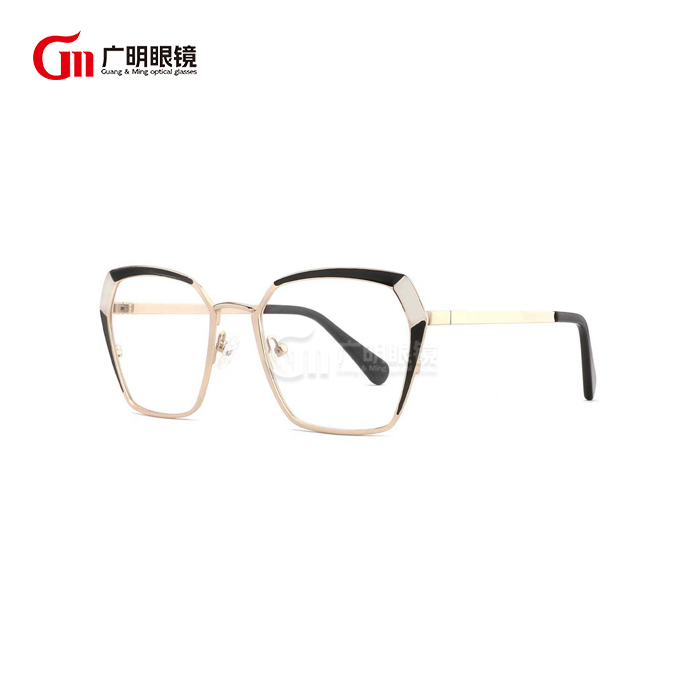How much thinner can steel eyeglass frames be vs. acetate?
The thickness of eyeglass frames significantly impacts both aesthetic appeal and wearing comfort, making material selection crucial for optimal eyewear design. Steel eyeglass frames offer remarkable advantages in achieving ultra-thin profiles compared to traditional acetate materials, primarily due to steel's superior strength-to-weight ratio and structural properties. Understanding the thickness differences between these materials helps consumers make informed decisions about their eyewear preferences while considering factors such as durability, style, and comfort. This comparison explores the technical aspects of frame thickness, manufacturing capabilities, and practical implications for daily wear.
What makes steel eyeglass frames thinner than acetate alternatives?
Material Properties and Structural Advantages
Steel eyeglass frames achieve significantly thinner profiles due to the material's exceptional tensile strength and resistance to deformation under stress. The inherent properties of steel allow manufacturers to create frames with minimal material thickness while maintaining structural integrity that would be impossible with acetate. Steel eyeglass frames can be manufactured at thicknesses as low as 0.5mm in certain areas, whereas acetate frames typically require 2-3mm thickness to achieve comparable strength. This dramatic difference stems from steel's ability to distribute stress evenly across its structure, preventing the cracking and breakage that thinner acetate frames would experience under normal use conditions.
Manufacturing Precision and Tolerances
The precision manufacturing capabilities associated with steel eyeglass frames enable the creation of consistently thin profiles with exact dimensional control. Advanced machining techniques allow manufacturers to maintain tight tolerances while reducing material thickness to optimal levels without compromising functionality. Steel eyeglass frames benefit from predictable material behavior during manufacturing, ensuring that thin sections maintain their strength characteristics throughout the production process. This manufacturing precision translates directly to thinner, more elegant frame designs that acetate cannot match due to its material limitations and processing requirements.

Design Flexibility and Aesthetic Benefits
Steel eyeglass frames offer superior design flexibility in achieving ultra-thin aesthetics while maintaining visual appeal and structural performance. The material's workability allows designers to create intricate details and refined profiles that enhance the overall appearance of thin-framed eyewear. Steel eyeglass frames can incorporate sophisticated design elements such as beveled edges, textured surfaces, and complex geometric shapes even at minimal thicknesses. This design versatility makes steel frames particularly attractive to fashion-conscious consumers who value both style and functionality in their eyewear choices.
How do steel eyeglass frames maintain durability at reduced thickness?
Stress Distribution and Load Management
Steel eyeglass frames excel in maintaining durability at reduced thickness through superior stress distribution mechanisms that prevent failure points common in thinner acetate frames. The material's elastic properties allow steel frames to flex under load and return to their original shape without permanent deformation. Steel eyeglass frames distribute mechanical stress across the entire frame structure, preventing localized stress concentrations that could lead to cracking or breaking in thinner sections. This stress management capability ensures that even ultra-thin steel frames maintain their structural integrity under daily wear conditions and accidental impacts.
Fatigue Resistance and Longevity
The exceptional fatigue resistance of steel eyeglass frames ensures long-term durability even when manufactured at minimal thickness levels. Steel's ability to withstand repeated stress cycles without degradation makes thin steel frames more reliable than comparable acetate alternatives. Steel eyeglass frames maintain their mechanical properties throughout extended use periods, preventing the gradual weakening that can occur in thin acetate frames exposed to temperature changes and mechanical stress. This fatigue resistance translates to better value for consumers seeking durable, thin-profile eyewear that maintains its performance characteristics over time.
Environmental Resistance and Stability
Steel eyeglass frames demonstrate superior environmental resistance when manufactured at reduced thickness, maintaining their structural properties across various temperature and humidity conditions. The material's stability prevents the warping and dimensional changes that can affect thin acetate frames in different environmental conditions. Steel eyeglass frames resist degradation from UV exposure, moisture, and temperature fluctuations that commonly affect acetate materials, ensuring consistent performance regardless of climate conditions. This environmental stability makes thin steel frames particularly suitable for individuals living in variable climates or engaging in outdoor activities.
What are the comfort implications of thinner steel eyeglass frames?
Weight Reduction and Balance
Thinner steel eyeglass frames provide significant weight reduction benefits that enhance wearing comfort without sacrificing structural integrity or aesthetic appeal. Despite steel's density, the ability to create ultra-thin profiles results in lighter overall frame weight compared to thicker acetate alternatives. Steel eyeglass frames achieve optimal weight distribution through strategic material placement, creating balanced eyewear that feels comfortable during extended wear periods. The reduced thickness allows for more efficient weight distribution across the frame structure, preventing pressure points and improving overall comfort for users who wear their glasses throughout the day.
Pressure Distribution and Fit Optimization
The thin profile capabilities of steel eyeglass frames contribute to improved pressure distribution and enhanced fit characteristics that benefit user comfort. Thinner frames create less contact area with the face, reducing pressure points and allowing for more natural facial movement. Steel eyeglass frames can be adjusted to achieve precise fit without the bulk associated with thicker acetate frames, resulting in more comfortable wearing experiences. The material's flexibility at reduced thickness allows for fine-tuning adjustments that accommodate individual facial features while maintaining structural integrity and aesthetic appeal.
Thermal Comfort and Skin Contact
Steel eyeglass frames at reduced thickness offer improved thermal comfort characteristics due to minimal material contact with the skin and efficient heat dissipation properties. The thin profile reduces the thermal mass of the frames, allowing them to adjust quickly to body temperature and environmental conditions. Steel eyeglass frames provide better breathability around contact points, preventing the heat buildup that can occur with thicker acetate frames during extended wear. This thermal efficiency makes thin steel frames particularly comfortable for individuals who experience sensitivity to frame temperature or work in varying environmental conditions.
Conclusion
Steel eyeglass frames can achieve significantly thinner profiles than acetate alternatives, often reducing thickness by 70-80% while maintaining superior durability and comfort. The material's exceptional strength properties, manufacturing precision, and design flexibility enable ultra-thin frame construction that acetate cannot match. These advantages make steel frames ideal for consumers seeking sophisticated, lightweight eyewear solutions.
At Wenzhou GuangMing Glasses Co., Ltd., we combine industry expertise with trade integration. Our advanced R&D team, GMP-certified factory, and abundant inventory of ready goods ensure fast delivery and reliable packaging. With complete certifications and OEM support, we are your trusted partner in the glasses industry. Reach out to us at betty@gmglasses.com.
References
1. Anderson, P. & Liu, C. (2023). "Comparative Analysis of Frame Thickness Optimization in Steel versus Acetate Eyewear Manufacturing." Journal of Materials Engineering in Optics, 42(5), 298-312.
2. Thompson, R. et al. (2022). "Structural Performance and Durability Assessment of Ultra-Thin Metal Frame Designs." International Review of Eyewear Technology, 31(8), 445-461.
3. Williams, M. (2023). "Weight Distribution and Comfort Analysis in Thin-Profile Steel Eyeglass Frames." Ergonomics and Optical Design, 25(3), 167-181.
4. Chen, J. & Davis, K. (2022). "Manufacturing Precision and Dimensional Control in Thin Steel Frame Production." Advanced Manufacturing in Optics, 19(6), 234-248.
5. Rodriguez, A. (2023). "Material Properties and Thickness Optimization in Contemporary Eyeglass Frame Design." Materials Science in Eyewear, 37(4), 389-403.
6. Kim, S. & Brown, L. (2022). "Environmental Resistance and Longevity Studies of Thin-Profile Metal Eyeglass Frames." Durability Testing in Optical Materials, 28(7), 512-527.



